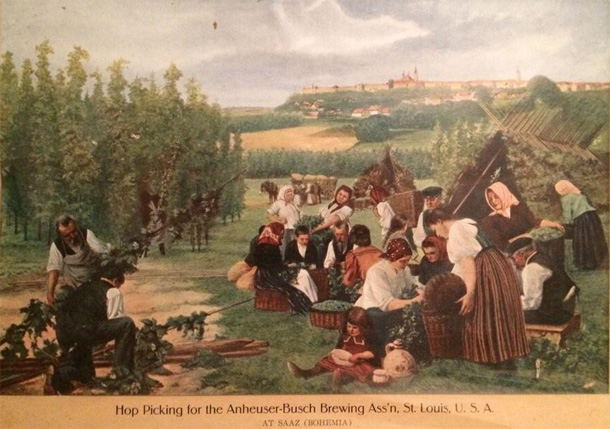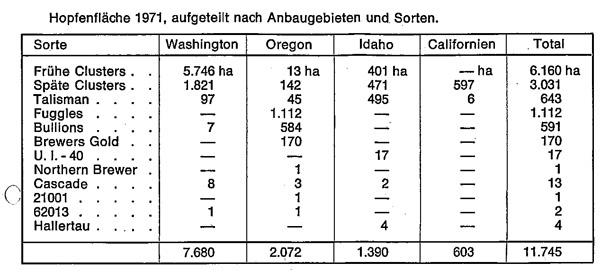
 The topic for The Session #140 is Czech beer, but I’m going to write about Czech hops. The advertisement at the top may not be as old as it looks, but it suggests an unbroken link to the past.
The topic for The Session #140 is Czech beer, but I’m going to write about Czech hops. The advertisement at the top may not be as old as it looks, but it suggests an unbroken link to the past.
A massive fire in the town of Žatek (Saaz in German) in 1768 destroyed historic documents that might provide more information about early cultivation, which apparently began in the first millennium. Few references to Bohemian hops exist before the fourteenth century, but from the time Charles IV actively promoted the product it flourished. In 1553 the Bohemian town of Plattau became the first outside of Spalt to receive its own hop seal, issued because dishonest merchants packaged inferior hops and sold them as “genuine Saaz.”
The original Saazer variety had, and still has, a red bine. It was called “Saazer Red” or “Asucha Red” to distinguish from the “Green Hop” that also grew in the area. In 1869 brewers paid 50 gulden per zentner for “Asuscha Red,” compared to 28 gulden per zentner for the “Green Hop.” More than a half century later, when hop breeding pioneer Karel Osvald began making clonal selections to improve the agronomic qualities of Saaz, he made it clear the hop would have evolved.
“Current hop cultures are a mix of vegetative posterity of various genetic origins. Issue of varieties is absolutely unclear, and we can talk neither of Czech old-Saaz red-bine hops nor of Semš hops. Semš hops originate from old-Auscha hops, which comes from old-Saaz hops,” he wrote. “Today the cultures of hops are thoroughly mixed, even though there are no great differences between neighboring plants in a hop yard. Hops are plants that can adapt to growing conditions, since the soil and the climate lend them a certain character.”

